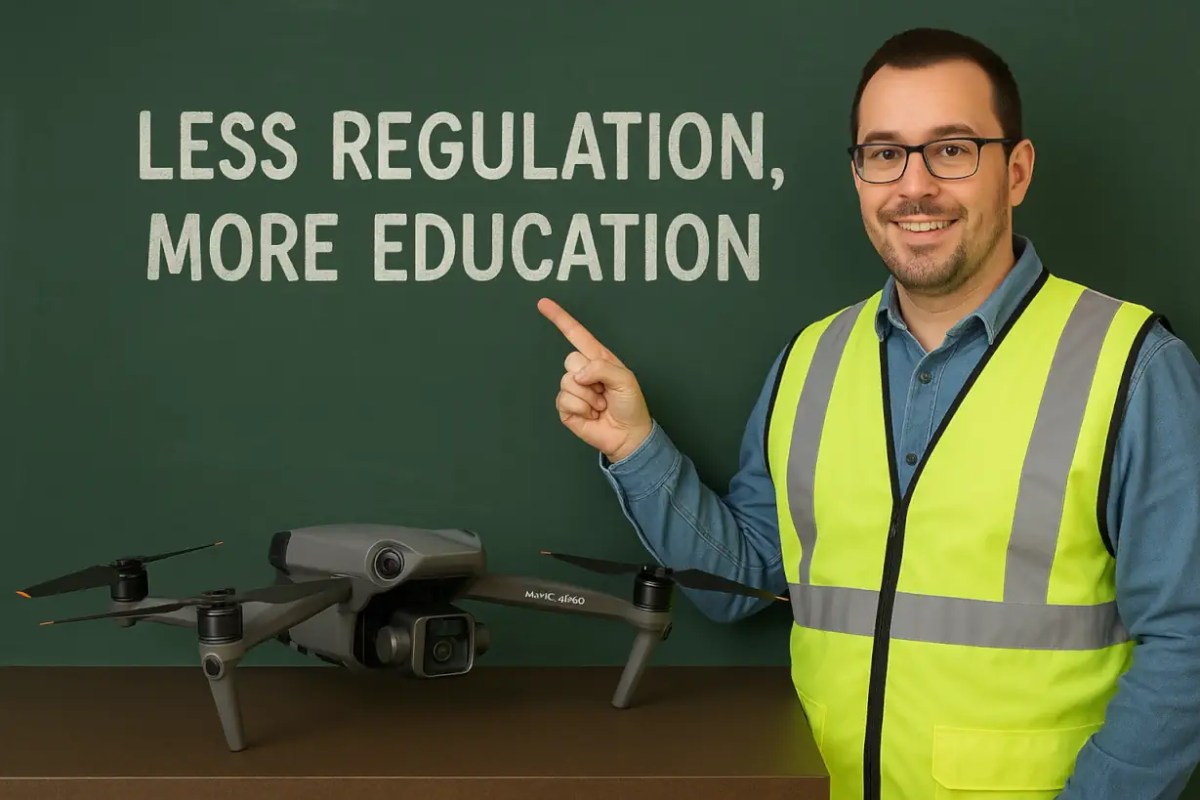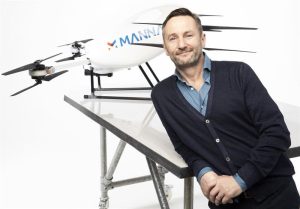Drone Safety: We All Share the Sky—Your Essential 2025 Guide to Safe, Responsible, and Enjoyable Flying
Imagine this future: your neighbor’s online order arriving by drone. Kids are documenting incredible FPV drone races for TikTok. Real estate agents are wowing us with stunning aerial footage. Welcome to 2025—where drones are ubiquitous! But as drones soar, so does our responsibility. We all share the sky, and responsible piloting ensures it remains safe, enjoyable, and welcoming for hobbyists, businesses, and those below.
This is your thorough, updated guide to staying safe and flying responsibly with drones in 2025. It covers rules, best practices, amusing anecdotes, legal pitfalls, and practical advice. Whether you’re keen to purchase a drone, master FPV flight, start a business, or avoid becoming a news headline (“Drone causes panic at stadium!”), you’ve found the right resource.
Why Drone Safety Matters (And Why Your Grandma Might Care)
Let’s face it—nobody wants an uninvited drone crashing their backyard barbeque or park outing. While drones are fantastic, they bring genuine risks: mid-air collisions, property damage, privacy breaches, wild goose chases… you get the idea.
Imagine these scenarios:
- A wedding photographer crashes a $2,000 drone into migrating ducks. (“That’s not confetti, everyone!”)
- An enthusiastic FPV racer unwittingly lands in a neighbor’s pool, achieving viral fame.
- Unscheduled delivery drones zigzagging through the city, bothering pilots, fire services, and air traffic control.
Safety is the cornerstone of trust—between drone pilots, communities, and those who simply want a clear and peaceful sky.
2025 Drone Laws: Key Rules You Must Know
Before you even launch your drone, it’s vital to understand what’s legal, what’s discouraged, and what could get you into trouble with the FAA or local authorities.
Universal Rules
- Stay Below 400 Feet: Drones must remain under 400 ft above ground level. This keeps both recreational and commercial drones in permissible zones, below most manned aircraft.
- Register Your Drone (If It’s Over 0.55 lbs/250g): Essentially, if your drone is bigger than a hamster, you need to register it with the FAA. Registration is quick and costs $5 for three years, with the number visibly displayed on your drone.
- Remote ID Reigns Supreme: Since late 2023, most drones must broadcast identification and location data, much like a digital license plate. This aids law enforcement and airspace management, especially during safety incidents. Recreational micro-drones and educational flights within specific areas often have exemptions.
- Stay Within Visual Line of Sight (VLOS): Always keep your drone within natural sight—not just through a screen. FPV pilots require a visual observer nearby.
- Avoid No-Fly Zones: Areas like airports, national parks, military bases, large stadiums, and disaster response zones are off-limits. Use the FAA’s B4UFLY app to verify before taking off.
- Avoid Flying Over People, Vehicles, or Crowds Without Special Permission: Overflight of people is heavily regulated without explicit FAA waivers. A tumbling drone poses serious risks.
Commercial Use, Licensing, and the 2025 Landscape
Aiming for a career in aerial cinematography, agricultural surveying, inspections, or deliveries? You’ll operate under FAA Part 107, which includes:
- Remote Pilot Certificate Required
- Standards on Language, Age, and Health
- Operational Restrictions (like speed, night flights, airspace approval)
- Necessary Insurance and risk management for commercial tasks
Businesses also face a complex network of state and local regulations concerning privacy and property rights. Always verify local rules alongside FAA requirements.
The Human Element: Top Safety Habits of Responsible Pilots
Experienced pilots don’t merely stick to the rules—they cultivate good habits.
- Pre-flight Checklist: Is the battery full? Are props undamaged? Is the weather safe? Are surroundings clear? As pilots say: “Check twice, fly once.”
- Plan the Flight: Chart your route, altitude, and “return home” spot. Notify those nearby—particularly if filming or taking photos.
- Respect Privacy and Public Spaces: Steer clear of hovering over private residences or backyards unless invited. Seek permission, be courteous.
- Be Predictable: Signal your intentions when near other operators or the public.
- Weather Wisdom: Gusty winds, rain, or heatwaves can quickly turn flights dangerous.
The Most Common Mistakes (And How to Avoid Them)
- Ignoring Visual Line of Sight: Out of sight means out of legal flight boundaries. Wandering through neighbors’ yards to retrieve a crashed drone is just humiliating.
- Flying Above People or Highways Without Waiver: The top way to gain negative press.
- Overlooking Airspace Alerts: Stadium TFRs, wildfires, even presidential visits create temporary no-fly zones.
- Neglecting Situational Awareness: Multi-tasking on your phone or chatting mid-flight is a recipe for disaster.
Real-Life Stories: Heroes, Blunders, and Why It Matters
Case 1:
A small-town rescue team employed drones to spot stranded flood victims at night. They cooperated with FAA and local police, ensuring a prompt and safe rescue for all involved.
Case 2:
An amateur pilot at an outdoor concert caused panic flying through a light show. His drone was seized, he incurred $1,500 in fines, and the local media was unforgiving. Remember: “Cool shot” is never worth crowd risk.
Case 3:
A real estate agent’s breathtaking drone footage attracted more clients—but crucially, she avoided flying low over neighbors’ yards, thereby securing a solid reputation and zero complaints.
Technology and Trends: What’s New in 2025 Safety
- Remote ID: Newly manufactured drones automatically transmit ID and position; both police and FAA can monitor this in real-time, boosting safety and accountability.
- Geofencing and Dynamic No-Fly Zones: Modern drones often refuse takeoff in restricted airspace like airports or event sites, and more manufacturers are integrating dynamic geofencing.
- Advanced Collision Avoidance: Many drones are equipped with sensors and AI to avoid obstacles and collisions, beneficial for novice pilots and cluttered skies.
- Automated Emergency Protocols: Lost connection or low battery triggers most drones to return or land safely, enhancing reliability.
- Drone Detection Systems for Public Events: Deployments at stadiums and city events are on the rise to prevent incidents, providing a safer environment for everyone.
Drone Communities: Smart, Supportive, and Fun
Joining a local club or online forum is the quickest route to learning, making friends, and ensuring safety. Especially for FPV enthusiasts, local races offer more security (and fun) than navigating power lines solo.
Community-based organizations establish good practice norms, provide legal updates, and organize drone first-aid clinics for pilots and their machines.
Expert Tips and Pro Moves
- Always Check for NOTAMs (Notices to Airmen): Temporary restrictions are commonplace.
- Label Your Controller With Your Phone Number: If you lose your drone, someone might return it. Trust us—it works.
- Utilize a Spotter: Two sets of eyes are always preferable, especially in busy public domains or during FPV racing.
- Don’t Rely on “Auto” Modes Alone: While AI is helpful, you remain responsible for your drone.
- Regularly Update Firmware: Ensures your drone remains legal and less prone to accidents.
Staying Out of Trouble: Privacy, Law, and Good Neighbor Policy
Drone operators are often caught in privacy debates. Resist hovering over backyards, apartment windows, or city pools—you risk not only fines but also trust issues with your community.
If someone objects to your drone, land promptly and listen. “Sorry, I didn’t mean to disturb you; I’ll adjust my route” can go a long way. Building goodwill is as essential as capturing amazing footage.
What About Insurance, Accidents, and Claims?
Most home insurance policies don’t cover drone-related accidents. Operators, especially businesses, should consider drone liability insurance—a minor cost for peace of mind.
After a crash:
- Retrieve your craft safely.
- Record the incident (photos, notes).
- Report to the FAA if necessary (it’s obligatory after certain incidents).
- Communicate transparently with involved parties.
What’s Next? The Sky’s Not the Limit—It’s Just the Beginning
As drones increasingly integrate into urban environments—delivering medicines, aiding emergency responses, creating art—shared safe practices will dictate their public acceptance and the scope of our flying liberties.
“We All Share the Sky” isn’t merely a phrase—it embodies a commitment between pilots, communities, and everyone gazing skyward with wonder. Fly responsibly: extend a hand when your neighbor acquires a new quad, share your safest flying tips, and celebrate the shared sky.
“A drone in the right hands can save lives, inspire, or deliver joy. Mismanaged, it’s trouble with wings. Fly smart, be gracious, and remember: The sky is everyone’s.”
FAQ: Drone Safety Quick Answers
- Do I need permission to fly in my neighborhood? Not at takeoff, but respect privacy and check for local restrictions.
- Can I use my drone for commercial purposes? Yes, with a Part 107 certification.
- Is night flying permitted? Only with proper anti-collision lighting and under certain FAA conditions.
- Are FPV drones legal? Yes, but always with a visual observer.
Note: Our team has trained numerous pilots, advised emergency services, and assisted in launching successful drone ventures. We champion education, so feel free to ask questions, join webinars, or contact us. We all share the sky, and our team is dedicated to helping you fly safely and with confidence.
Fly safe. Fly smart. Share the sky. And if you film a UFO, let us know. We’d love to hear about it!













